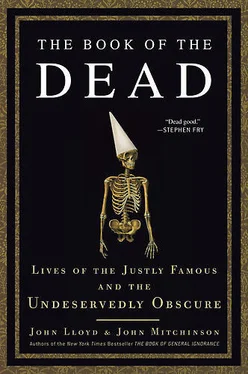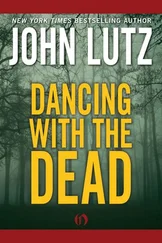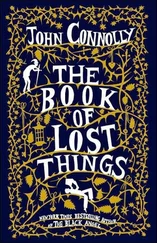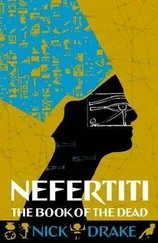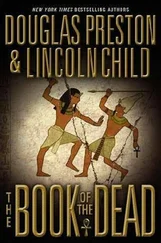As Ann grew older and her health began to fail, her visions intensified. She paid personal visits to those suffering in hell, imagining herself as “the woman clothed with the sun” from the Book of Revelation who sprouts the wings “of a great eagle”:
I felt the power of God come upon me, which moved my hands up and down like the motion of wings; and soon I felt as if I had wings on both hands… and they appeared as bright as gold. And I let my hands go as the power directed, and these wings parted the darkness to where souls lay, in the ditch of hell, & I saw their lost state.
She reported back to the living relatives of the damned how much their prayers had soothed the torments of those who had died unshriven. This led many of her followers to believe she was indeed the second incarnation of Christ. As one young Shaker wrote: “Every trew believer believes that Christ has made his second appearance in the world clothed in flesh & blood in the form of a woman by name Ann Lee.”
Ann died of leukemia at Waterlievt in 1784. She was only forty-eight. Worn out by the frequent confrontations and beatings, she ended her life peacefully, after several weeks of sitting in her rocking chair “singing in unknown tongues… and wholly divested of any attention to material things.” Her passage to the spirit realm was helped on its way by a lively Shaker funeral, but for many years, rumors of her impending return persisted. She herself had never claimed any such thing. Her consistent view was: “The second appearing of Christ is in His Church.” She never expected the personal return of Christ because she believed he had already turned up in the establishment of the Shaker faith.
By the time Ann’s skeletal remains were exhumed fifty-six years later to see if she was actually inside her coffin, the Shaker community had more than six thousand members living in nineteen different settlements. This was to be the movement’s high-water mark. In 1863, midway through the Civil War, President Lincoln, in recognition of their pacifist views, exempted them from combat, making them history’s first official conscientious objectors. But gradually, what many people saw as the big drawback of Shakerism—the insistence on celibacy—led to a slow decline in converts. In 1965 they voted to accept no new members. Today there are only three Shakers left, in the last Shaker settlement at Sabbathday Lake, near New Gloucester in Maine. They have the distinction of being America’s smallest religious or ethnic minority.
For all Ann Lee’s strangeness, her emphasis on equality for all—particularly women—and a democracy based on social justice and religious tolerance were well ahead of their time. Her view of life after death, like everything else, was bracingly clear: Give up sex—the curse that had afflicted humanity since Adam and Eve—and you would be saved. As she had seen hell and could describe it in detail, who would dare risk not believing her?
Another regular visitor to hell was the English poet and painter William Blake(1757–1827). Unlike Ann Lee’s hideous vale of torments, Blake’s hell, though the opposite of heaven, was its equal—and every bit as necessary:
Attraction and Repulsion, Reason and Energy, Love and Hate, are necessary to Human existence. From these contraries spring what the religious call Good & Evil. Good is the passive that obeys Reason. Evil is the active springing from Energy. Good is Heaven. Evil is Hell.
These insights are from his visionary work, The Marriage of Heaven and Hell , published in 1790. Unlike Ann Lee, Blake didn’t descend into hell like an eagle; he sauntered around it like a tourist: “As I was walking among the fires of hell… I collected some of their Proverbs….” Just as the proverbs of different countries give a clue to their character, so the “Proverbs of Hell” would provide a better idea of the place than describing what the locals were wearing, if anything. The bits of “infernal wisdom” he collected there would have appalled Ann Lee:
“The nakedness of woman is the work of God.”
“Sooner murder an infant in its cradle than nurse unacted desires.”
“Damn braces: Bless relaxs.”
“The road of excess leads to the palace of wisdom.”
Blake was a favorite of the Beat poets of the 1950s and the hippy movement of the 1960s. For him, full expression of sexuality—for both men and women—was an essential part of worship. The spirit and flesh were one; Blake had no time for the concept of sin or for the denial of passion. In his notes on his (now lost) painting A Vision of the Last Judgment (1810) he writes:
Men are admitted into Heaven not because they have curbed & govern’d their Passions or have No Passions, but because they have Cultivated their Understandings.
To Blake, the afterlife was neither remote nor frightening. In a letter to his patron and collaborator (the wealthy and popular writer William Hayley) in 1800, Blake comforted him on the loss of his young son:
I know that our deceased friends are more really with us than when they were apparent to our mortal part. Thirteen years ago I lost a brother, and with his spirit I converse daily and hourly in the spirit, and see him in my remembrance, in the region of my imagination. I hear his advice, and even now write from his dictate.
Blake’s younger brother Robert had died of consumption when he was twenty-five, a loss that affected Blake deeply. In a scene reminiscent of Cuthbert’s vision of the death of St. Aidan, Blake observed his brother’s released spirit ascend through the ceiling “clapping its hands for joy.” Robert regularly visited Blake in dreams. One such encounter produced a brilliant advance in printing technology. In the eighteenth century, pictures called etchings were printed in the following way: Copper plates were covered with wax. The artist scratched a picture in the wax with a needle and then dipped the whole thing in acid. The acid bit into the exposed metal but left the wax alone. The wax was then removed by applying heat to melt it, and the copper plate was inked. After being wiped to remove excess ink, so there was only ink in the indented lines, the plate was then pressed onto paper, providing a print of the original picture. Robert’s idea reversed the process. The artist painted directly on to the copper using varnish. When the plate was dipped in acid, the acid cut away the metal around the acid-resistant varnish, leaving the picture standing out in relief. Dispensing with the wax speeded the whole thing up, and painting in varnish gave the artist far more freedom of expression than scratching away in wax. Blake’s invention could have made him a great deal of money; instead it brought him only delight and immortality. Relief etching allowed him to “body forth” the visions of his imagination and create his illuminated books, the striking combinations of poetry and images for which he is now famous.
Today, Blake is known as one of England’s most original artists and thinkers, but this was far from the case during his lifetime. He mounted only one exhibition of his work, in 1809. He sold nothing at all and attracted only one review. The Examiner dismissed him as “an unfortunate lunatic” who had published “a farrago of nonsense, unintelligibleness, and egregious vanity, the wild effusions of a distempered brain.” It was a view widely held. On being shown some of Blake’s drawings, George III shouted “Take them away! Take them away!” Even the poet Wordsworth thought he was mad—although, to be fair, he qualified this by saying “there is something in the madness of this man which interests me more than the sanity of Lord Byron or Walter Scott.”
Читать дальше
